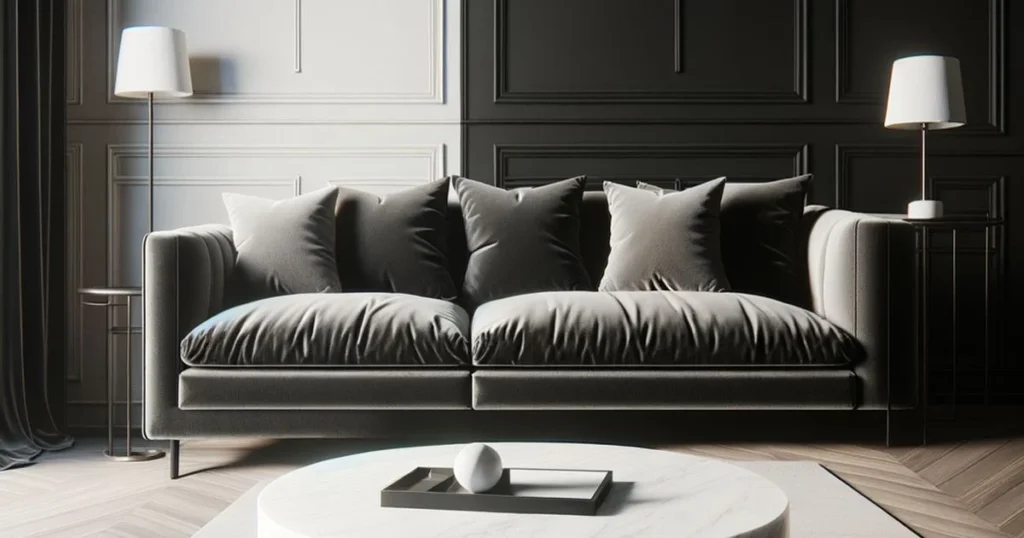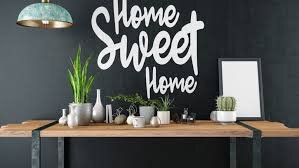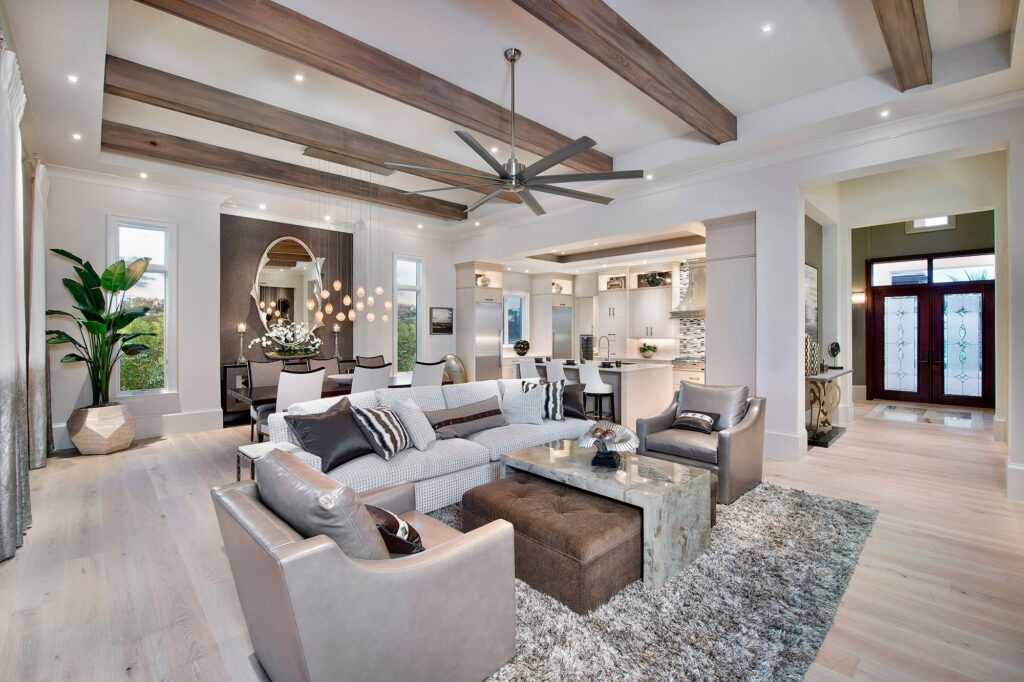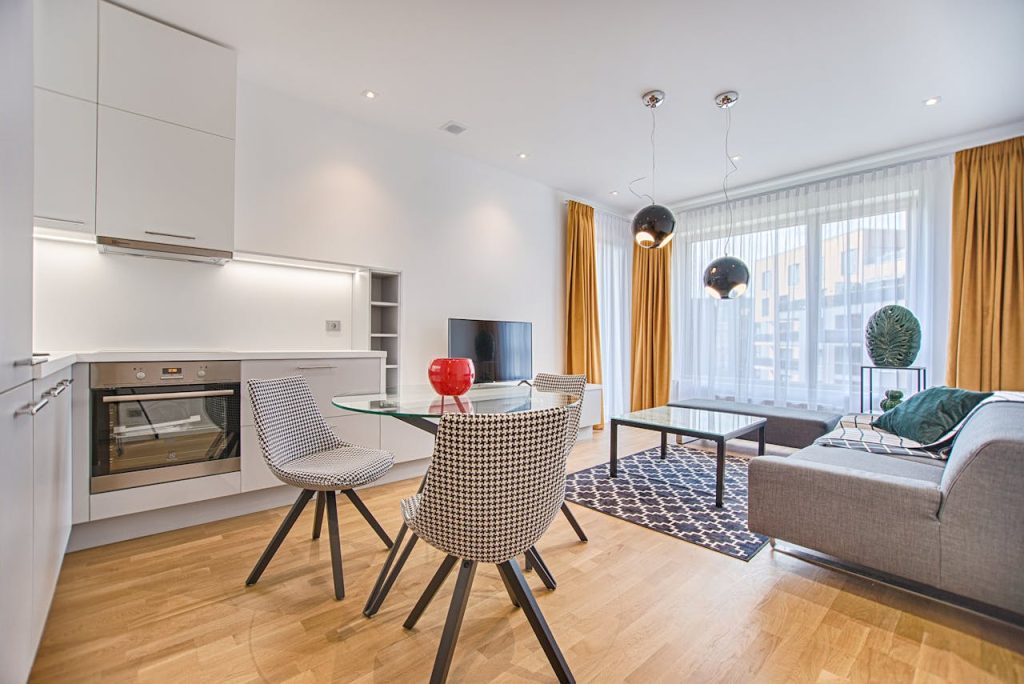Overview
The idea of contrast is essential to creating aesthetically pleasing and well-balanced environments in the ever-changing field of interior design. In interior design, opposition refers to the intentional use of contrast, such as combining soft and harsh materials, light and dark colours, or traditional and modern designs, to add interest and harmony to a space. This method gives contemporary interiors vitality and depth, which makes the area more interesting and distinctive. Ordinary rooms are transformed into works of art by designers using contrast to create balance, highlight focal points, and add drama.

An Overview of Design Opposition’s History
Contrast was employed to guide the viewer’s eye and establish visual harmony in classical art and design, therefore the idea of opposition is not new. Opposition has been a key component of both architecture and interior design since the Renaissance’s. Black-and-white chequerboard floors to the 20th century’s striking color-blocking. Opposition has become a crucial component of current design trends in recent years due to the emergence of minimalism and modern aesthetics.
Using Colour Contrast to Make an Impact
One of the most effective ways to create opposition in interior design is through colour contrast. White walls and black furniture are two examples of how designers can combine light and dark colours to create eye-catching visual intrigue. This method draws attention to focus points, emphasizing important components of a space. Using colour opposition may make your house a contemporary, welcoming place, whether you’re opting for a dramatic complementary colour scheme or a monochromatic one with a range of shades.

Play with Texture: Soft vs. Hard
Using diverse textures is another way to create opposition in home design. A space gains depth and dimension when harsh surfaces like metal or wood are combined with softer fabrics like velvet or wool. For instance, a modern home that strives to be both fashionable and livable would benefit greatly from the harmony of soft linen barstools and a polished marble countertop.
Old and New: Combining Different Eras
Using a combination of contemporary and old pieces in your home design is one method to generate antagonism. Your room gains a sense of history and narrative when you combine modern décor pieces with antique furniture. An eclectic yet unified look is produced by the collision of new and old elements. This method of opposition is perfect for people who need a timeless and customized interior.
Keeping Light and Shadow in Balance
In order to create antagonism in a space, lighting is crucial. Areas of darkness contrasted with bright light create drama and alter how space is perceived. The visual composition is made more interesting and varied by a well-lit space with darker nooks or places with delicate lighting contrasts. It highlights architectural characteristics and aids in delineating areas within an open floor design.

Striking a Balance Between Symmetry and Asymmetry
Both symmetry and asymmetry can be used to create opposition in interior design. While asymmetrical patterns provide a more lively and whimsical vibe, symmetrical layouts foster order and tranquilly. A room can get balance and vitality from the contrast between these two design philosophies. For example, putting two matching lamps on either side of a bed brings symmetry, while the artwork above provides a contemporary touch.
Bold Opposition Between Minimalism and Maximalism
The contrast between minimalism and maximalism is frequently used in contemporary home design. Every item in a minimalist setting serves a purpose, and simplicity and clean lines are emphasised. Nonetheless, adding maximalist components like striking artwork or patterned fabrics. Can produce a dramatic contrast that keeps the room from feeling overly clinical. A more adaptable and customised setting is made possible by this harmony between expression and restraint.

In conclusion
To create a modern home that feels dynamic and unified, interior designers must master the art of contradiction. By combining contrasts like as symmetry and asymmetry, light and dark, soft and hard, and ancient and new. Spaces that are both aesthetically pleasing and emotionally captivating can be created. By purposefully using contrast, you may improve your interior design and make your house a reflection of your own personal preferences.
Section on Q&A
What does interior design opposition mean?
The use of contrast, such as colour, texture, and form, to produce visual appeal and balance in a room is known as opposition in interior design.
How can a room be improved by colour contrast?
Colour contrast may highlight key areas, enlarge or intimate spaces, and give the entire design additional depth.
In home design, what are some instances of texture contrast?
A space gains depth and interest when rough materials like wood or stone are used with soft textiles like velvet to create a tactile contrast.
Is it possible for modern design to incorporate both new and ancient furniture?
Yes, combining new and vintage materials gives modern homes a well-balanced, eclectic style that gives them personality and history.
What role does lighting play in design opposition?
A room’s overall ambiance is improved by the contrast between strong light and shadows, which helps define places and generate mood.








